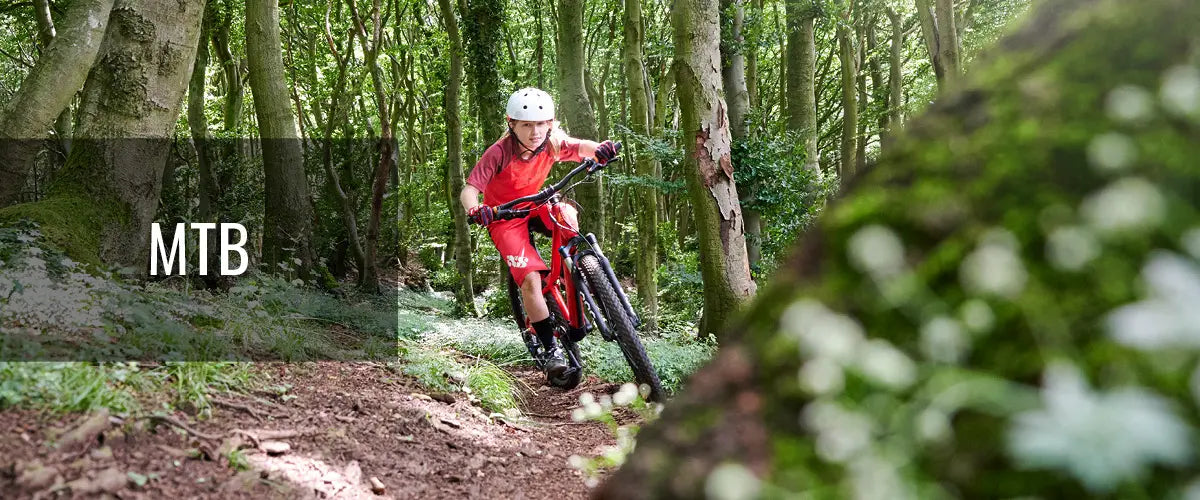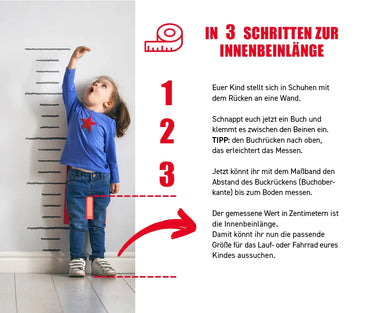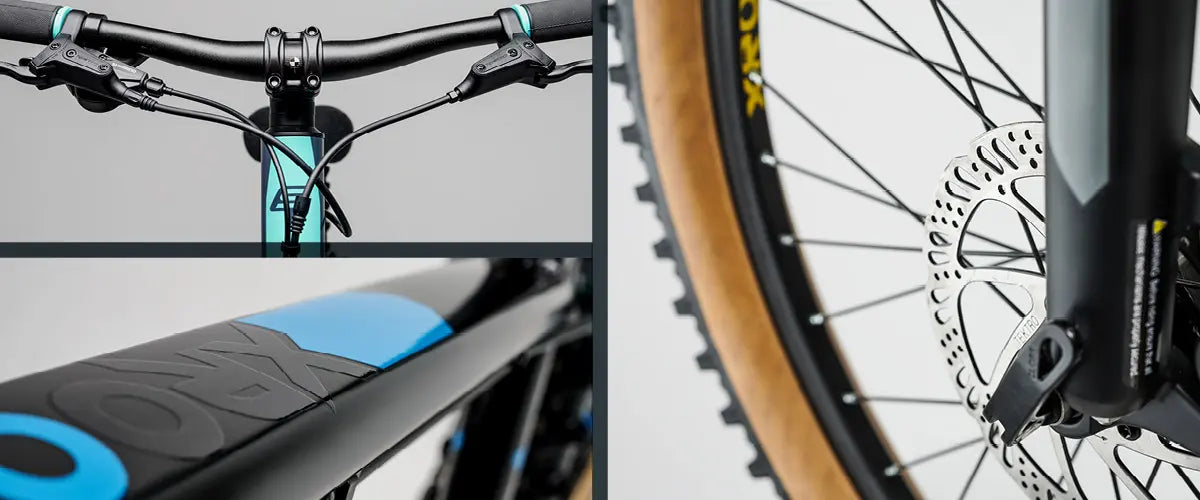Weight, brakes etc.
Another factor you should consider when buying a MTB for children and teenagers is the weight of the mountain bike. So that the little ones can get along well on the mountain bike trail or in the forest, the future children's mountain bike should ideally be as light as possible. Especially with smaller children, there is a high risk that the weight of the children's MTB will come very close to the child's body weight. This makes it unnecessarily difficult for young people to handle their mountain bikes.
The safety of our little MTB riders is important to us: Since a children's mountain bike is designed primarily for unpaved terrain, it should have excellent brakes and smooth gear shifting.
Rigid fork vs. suspension fork
When it comes to the question of suspension, you have the choice between a mountain bike with a suspension fork or one with a rigid fork. Both options have their advantages and disadvantages.
A rigid fork transfers the muscle power used to the route better than a suspension fork, which means that you can go a little further with the effort you put in than with a suspension fork. This circumstance becomes an issue especially on steeper paths.
A mountain bike with a suspension fork, on the other hand, compensates for irregularities thanks to its springy effect and thus ensures that the MTB is more comfortable to ride for young people and children. In addition, the mountain bike equipped with a suspension fork increases your child's riding safety.
However, for the greater riding comfort of a mountain bike with a suspension fork, you also have to accept a higher weight and a higher price.

















